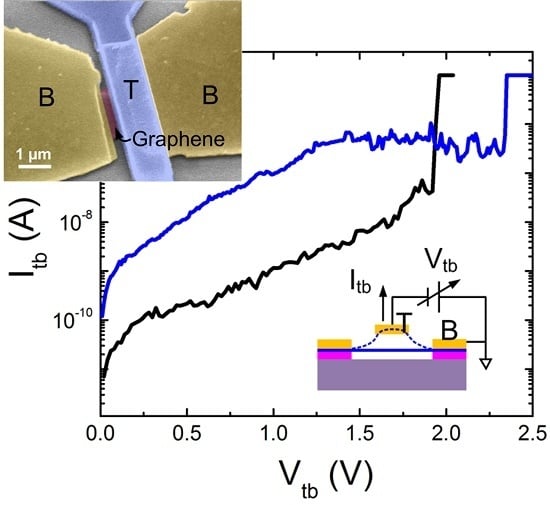Locally-Actuated Graphene-Based Nano-Electro-Mechanical Switch
Abstract
:1. Introduction
2. Experimental Details
2.1. Switch Fabrication
2.2. Device Characterization
3. Results and Discussions
3.1. Double-Clamped Beam Switch
3.2. Cantilever-Type Switch
4. Conclusions
Acknowledgments
Author Contributions
Conflicts of Interest
References
- Loh, O.Y.; Espinosa, H.D. Nanoelectromechanical contact switches. Nat. Nanotechnol. 2012, 7, 283–295. [Google Scholar] [CrossRef] [PubMed]
- Milaninia, K.M.; Baldo, M.A.; Reina, A.; Kong, J. All graphene electromechanical switch fabricated by chemical vapor deposition. Appl. Phys. Lett. 2009, 95, 183105. [Google Scholar] [CrossRef]
- Kim, S.M.; Song, E.B.; Lee, S.; Seo, S.; Seo, D.H.; Hwang, Y.; Candler, R.; Wang, K.L. Suspended few-layer graphene beam electromechanical switch with abrupt on-off characteristics and minimal leakage current. Appl. Phys. Lett. 2011, 99, 023103. [Google Scholar] [CrossRef]
- Nagase, M.; Hibino, H.; Kageshima, H.; Yamaguchi, H. Graphene based nanoelectromechanical switch with high On/Off ratio. Appl. Phys. Express 2013, 6, 055101. [Google Scholar] [CrossRef]
- Li, P.; You, Z.; Haugstad, G.; Cui, T. Graphene fixed-end beam arrays based on mechanical exfoliation. Appl. Phys. Lett. 2011, 98, 253105. [Google Scholar] [CrossRef]
- Sun, J.; Wang, W.; Muruganathan, M.; Mizuta, H. Low pull-in voltage graphene electromechanical switch fabricated with a polymer sacrificial spacer. Appl. Phys. Lett. 2014, 105, 033103. [Google Scholar] [CrossRef]
- Sun, J.; Schmidt, M.E.; Muruganathan, M.; Chong, H.M.; Mizuta, H. Large-scale nanoelectromechanical switches based on directly deposited nanocrystalline graphene on insulating substrates. Nanoscale 2016, 8, 6659–6665. [Google Scholar] [CrossRef] [PubMed]
- Li, P.; You, Z.; Cui, T. Raman spectrum method for characterization of pull-in voltages of graphene capacitive shunt switches. Appl. Phys. Lett. 2012, 101, 263103. [Google Scholar] [CrossRef]
- Li, P.; You, Z.; Cui, T. Graphene cantilever beams for nano switches. Appl. Phys. Lett. 2012, 101, 093111. [Google Scholar] [CrossRef]
- Reserbat-Plantey, A.; Marty, L.; Arcizet, O.; Bendiab, N.; Bouchiat, V. A local optical probe for measuring motion and stress in a nanoelectromechanical system. Nat. Nanotechnol. 2012, 7, 151–155. [Google Scholar] [CrossRef] [PubMed]
- Ferrari, A.C.; Meyer, J.C.; Scardaci, V.; Casiraghi, C.; Lazzeri, M.; Mauri, F.; Piscanec, S.; Jiang, D.; Novoselov, K.S.; Roth, S.; et al. Raman spectrum of graphene and graphene layers. Phys. Rev. Lett. 2006, 97, 187401. [Google Scholar] [CrossRef] [PubMed]
- Moser, J.; Barreiro, A.; Bachtold, A. Current-induced cleaning of graphene. Appl. Phys. Lett. 2007, 91, 163513. [Google Scholar] [CrossRef] [Green Version]
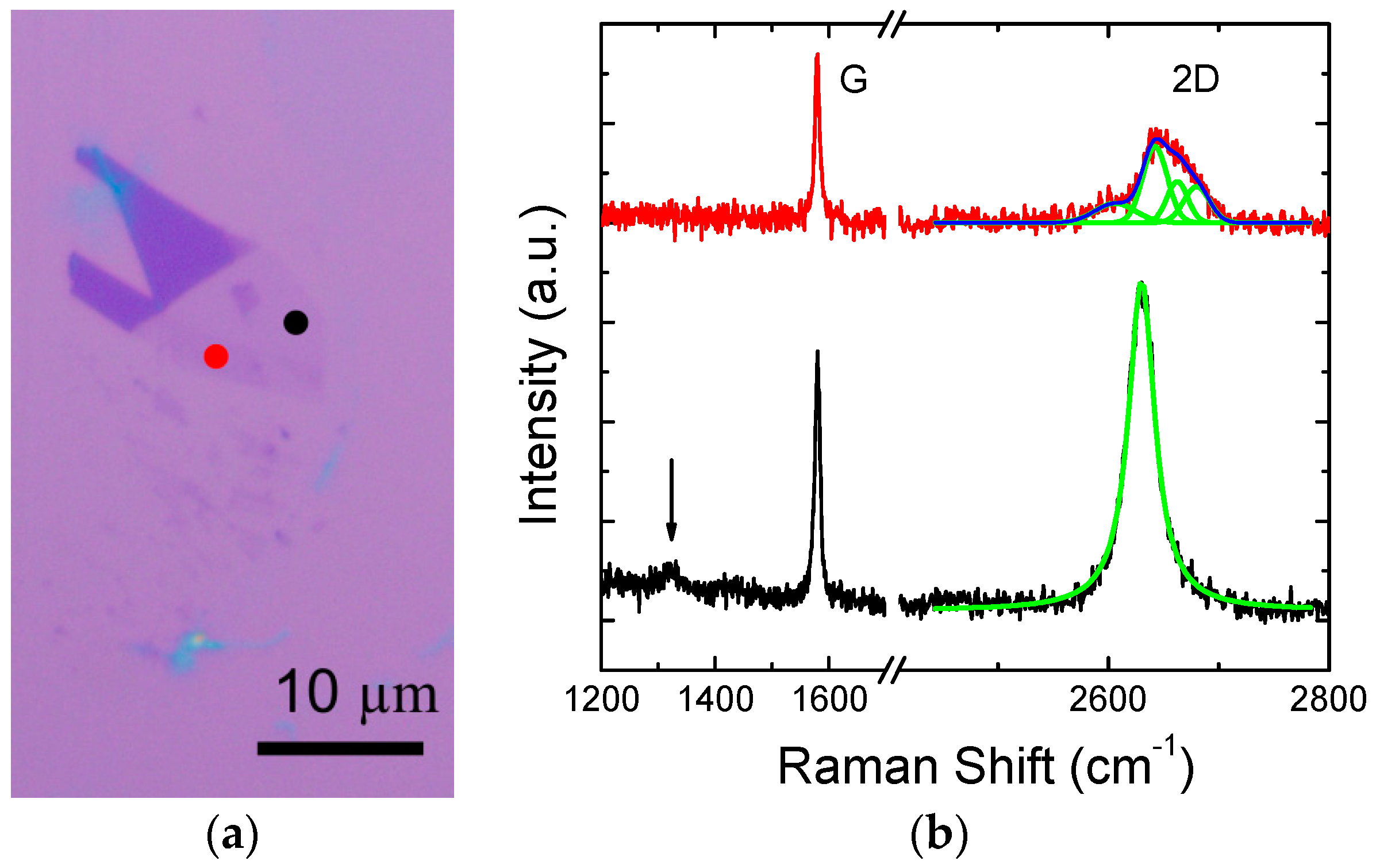
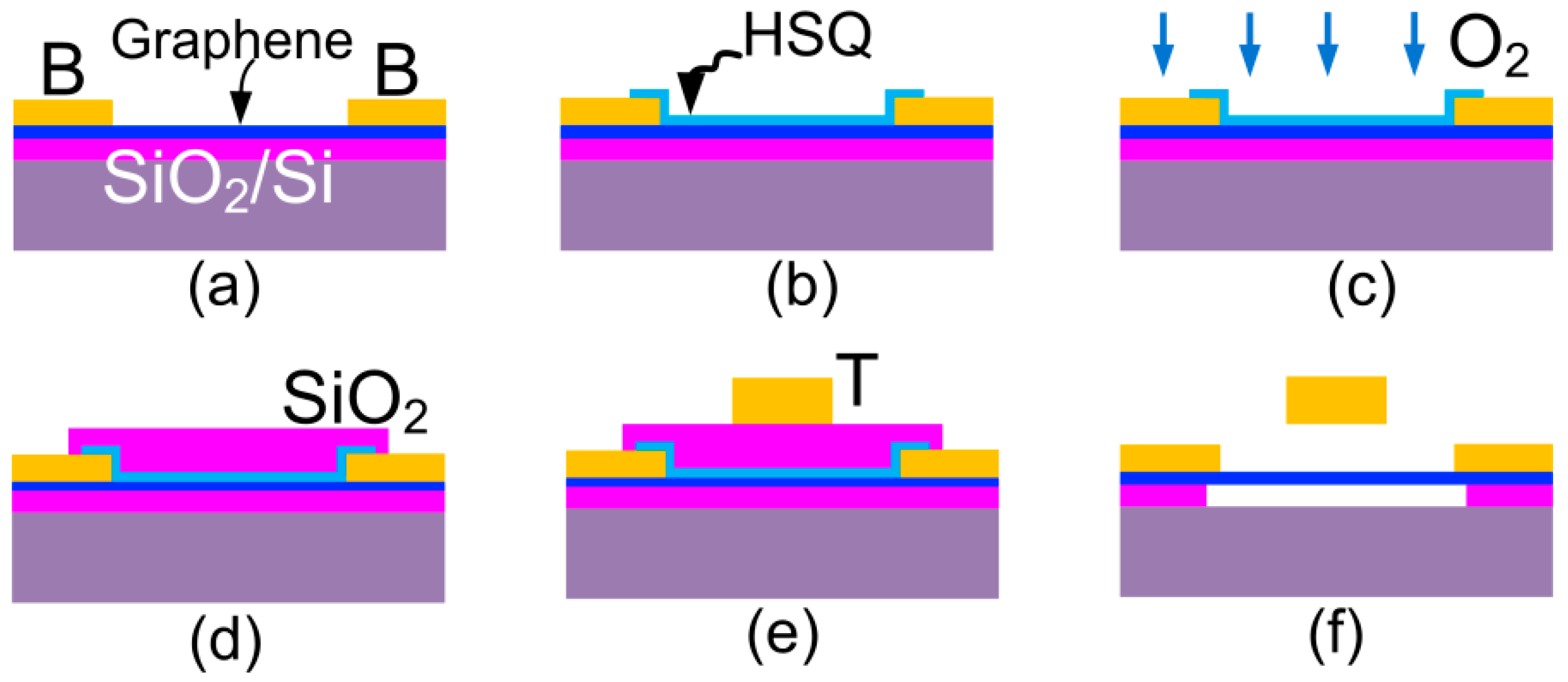
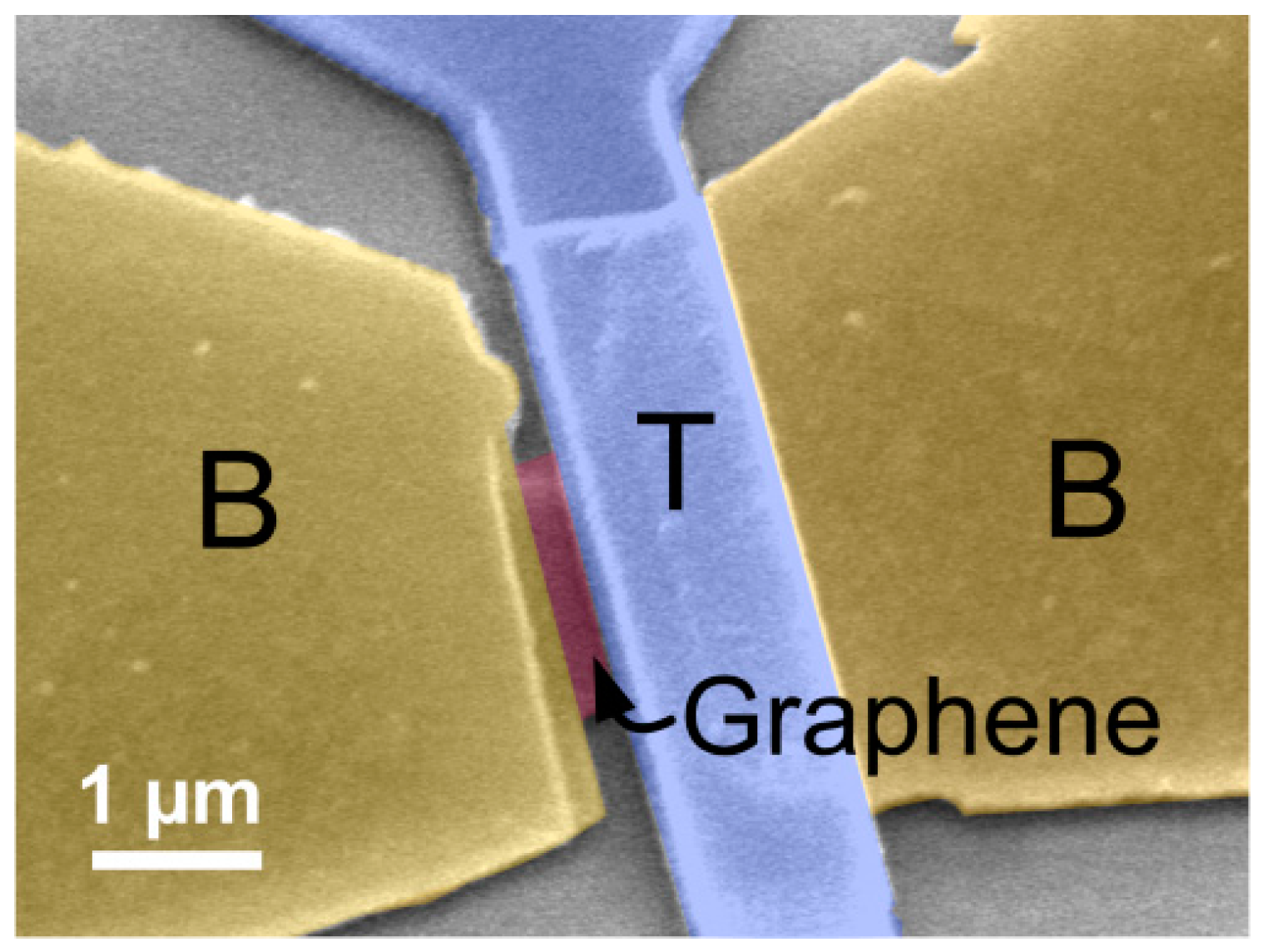

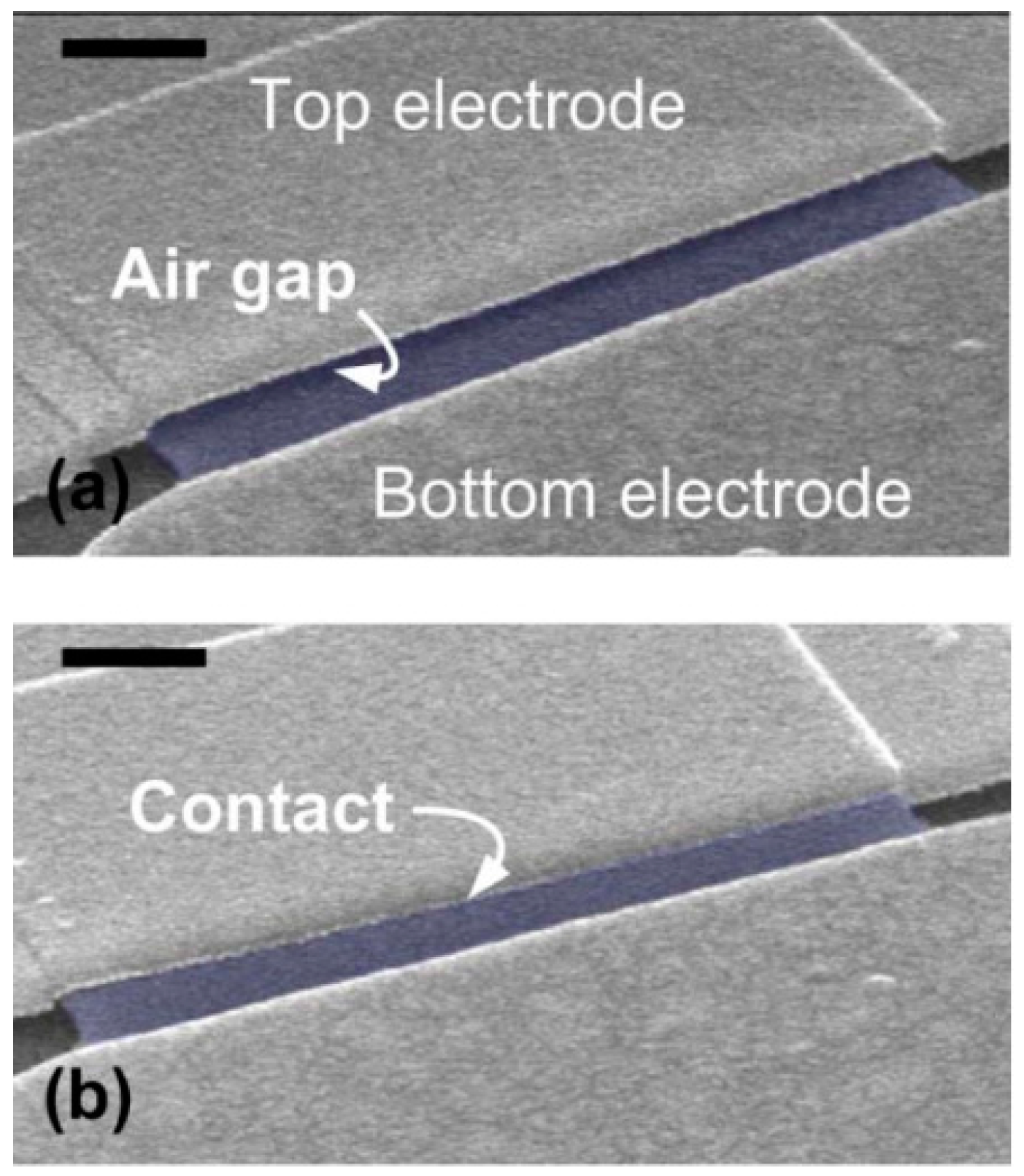
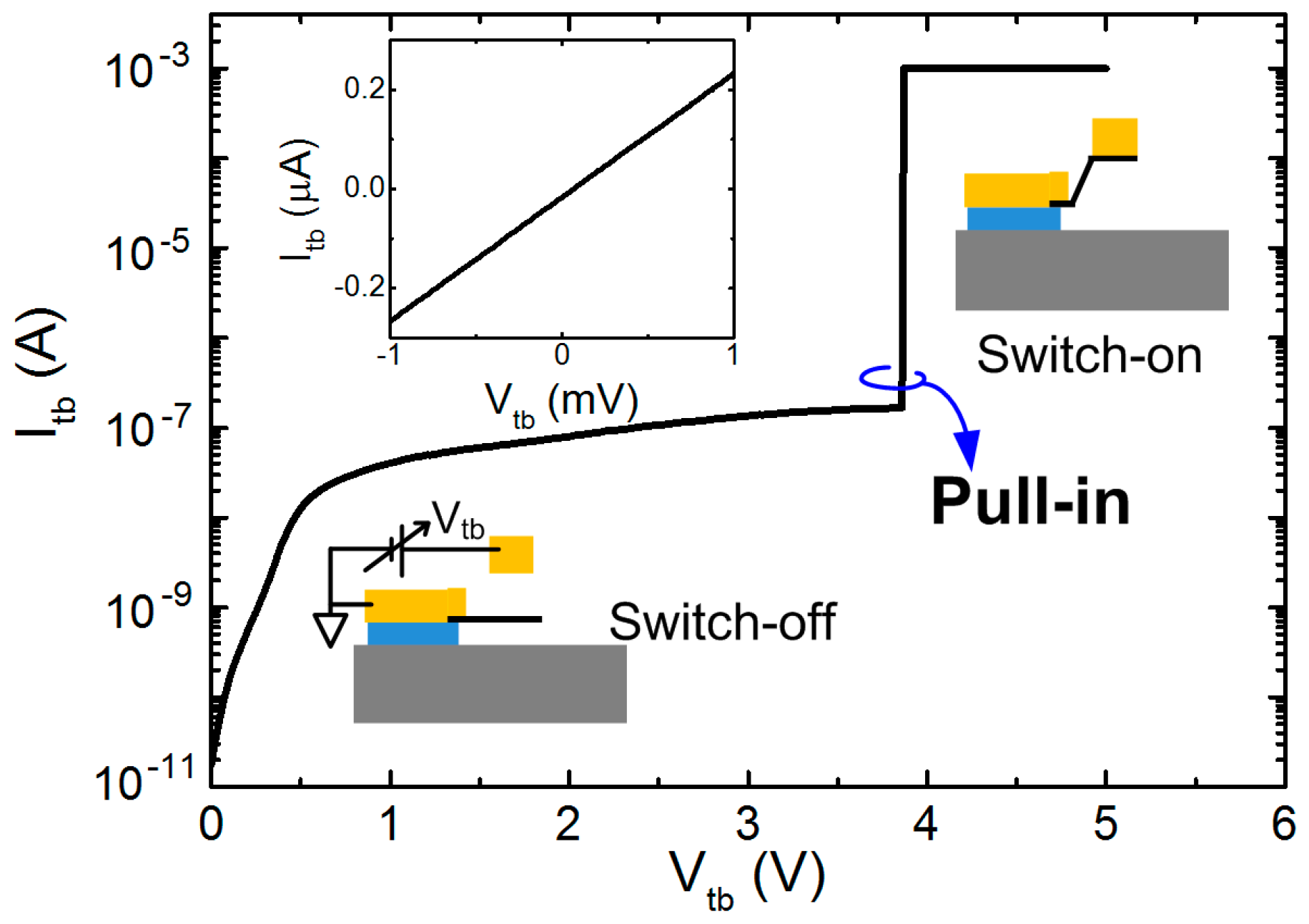
© 2016 by the authors. Licensee MDPI, Basel, Switzerland. This article is an open access article distributed under the terms and conditions of the Creative Commons Attribution (CC-BY) license ( http://creativecommons.org/licenses/by/4.0/).
Share and Cite
Sun, J.; Muruganathan, M.; Kanetake, N.; Mizuta, H. Locally-Actuated Graphene-Based Nano-Electro-Mechanical Switch. Micromachines 2016, 7, 124. https://doi.org/10.3390/mi7070124
Sun J, Muruganathan M, Kanetake N, Mizuta H. Locally-Actuated Graphene-Based Nano-Electro-Mechanical Switch. Micromachines. 2016; 7(7):124. https://doi.org/10.3390/mi7070124
Chicago/Turabian StyleSun, Jian, Manoharan Muruganathan, Nozomu Kanetake, and Hiroshi Mizuta. 2016. "Locally-Actuated Graphene-Based Nano-Electro-Mechanical Switch" Micromachines 7, no. 7: 124. https://doi.org/10.3390/mi7070124




